Hawaiian BBQ introduces a unique twist on traditional barbecue by blending local flavors and cultural influences. These 14 dishes showcase the diverse ingredients and cooking styles that define Hawaiian cuisine, offering a delightful escape from the ordinary. From tropical fruits to savory meats, each dish tells a story of the islands’ rich culinary heritage. Whether you’re a barbecue aficionado or new to these tastes, Hawaiian BBQ promises to transport your senses straight to the heart of the Pacific with vibrant flavors and enticing aromas. Get ready to explore the myriad tastes that make Hawaiian BBQ truly special.
Huli Huli Chicken
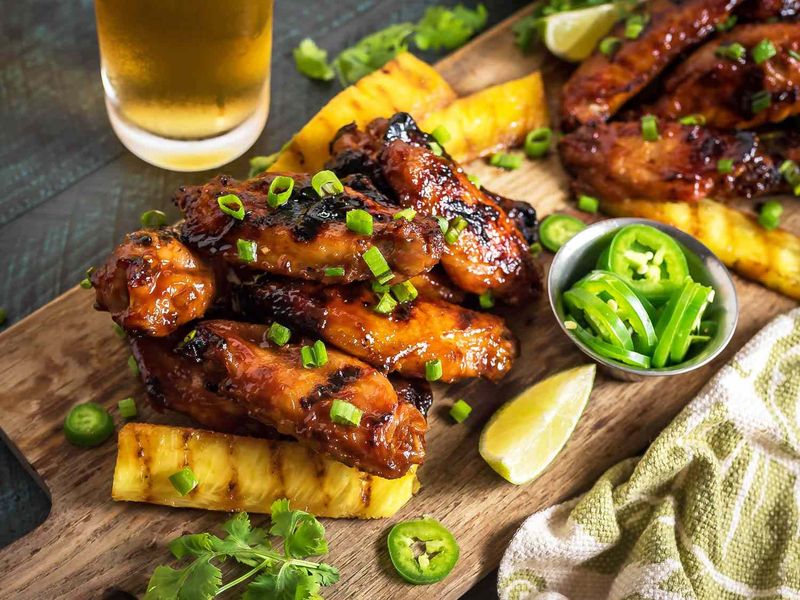
Picture this: chicken marinated in a tantalizing mix of soy sauce, pineapple juice, and ginger, then grilled to perfection. Huli Huli Chicken is a beloved Hawaiian dish that owes its name to the Hawaiian word for “turn,” a nod to the traditional cooking method of rotating the chicken over an open flame.
The sweet and savory glaze caramelizes as it cooks, creating a mouthwatering crust. This dish is often served at family gatherings and luaus, capturing the spirit of Hawaiian hospitality. Accompanied by rice or macaroni salad, it’s a true island favorite.
Fun fact: Huli Huli Chicken was originally cooked on makeshift grills made from spare metal parts!
Kalua Pork
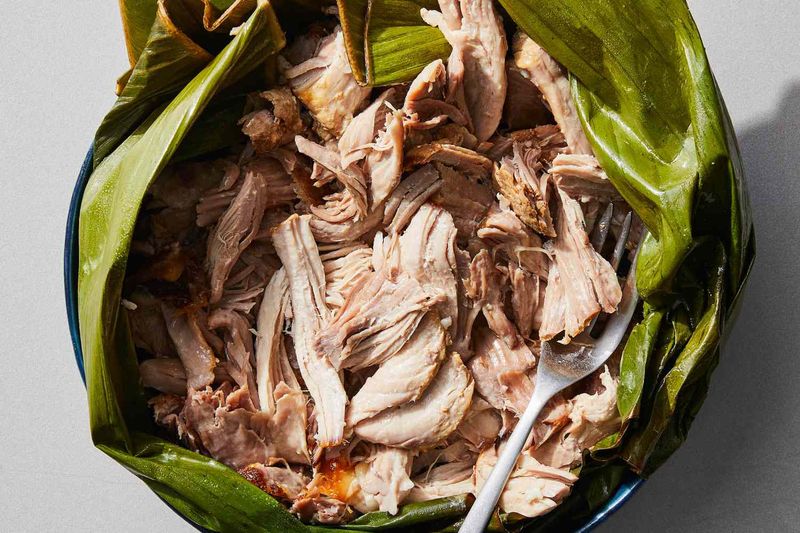
Imagine slow-cooked pork so tender it falls apart at the touch. Kalua Pork, a quintessential Hawaiian dish, is traditionally prepared in an underground oven called an imu. This cooking method imparts a smoky flavor that pairs perfectly with the pork’s natural richness.
Kalua Pork is often a centerpiece at Hawaiian celebrations, served alongside poi and lomi lomi salmon. The smoky aroma and melt-in-the-mouth texture have made it a favorite both locally and beyond the islands. It’s a dish that embodies the aloha spirit and community gatherings.
Did you know? Traditionally, banana leaves are used to cover the pork, adding a subtle sweetness.
Loco Moco

For comfort food lovers, Loco Moco is a must-try. This unique dish features a hamburger patty resting on a bed of fluffy white rice, topped with a fried egg and smothered in savory brown gravy.
It’s a hearty meal that satisfies the soul and is popular as a breakfast or lunch option across the islands. Each component adds its own texture and flavor, creating a harmonious balance in every bite. Loco Moco reflects Hawaiians’ eclectic tastes, combining elements of different cuisines.
Fun fact: Loco Moco is said to have originated in Hilo in the late 1940s, catering to hungry surfers and students!
Spam Musubi
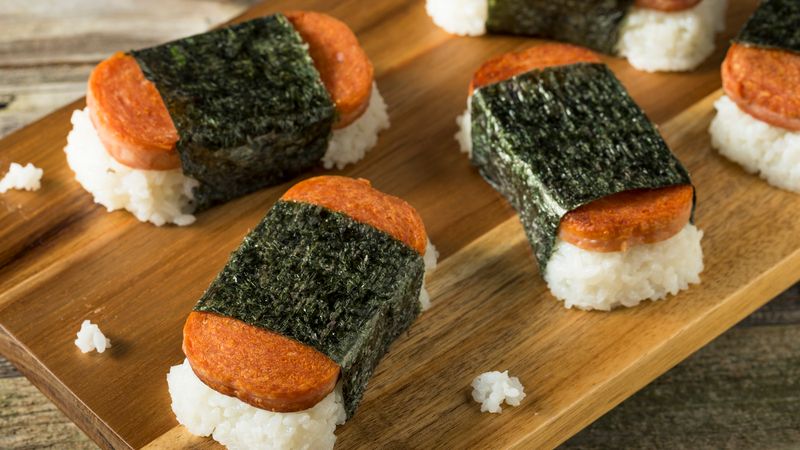
Spam Musubi is a beloved snack in Hawaii, fusing Japanese and local influences. This portable treat consists of a slice of grilled Spam atop a block of rice, all wrapped snugly in nori (seaweed).
Its simplicity and satisfying taste make it a favorite, whether enjoyed on the go or as part of a picnic. The savory Spam, paired with sticky rice, creates a delightful contrast of flavors and textures. It’s a testament to Hawaii’s ability to adapt and integrate diverse culinary traditions.
Did you know? Hawaii consumes more Spam per capita than any other state, thanks in part to this popular snack!
Shoyu Chicken
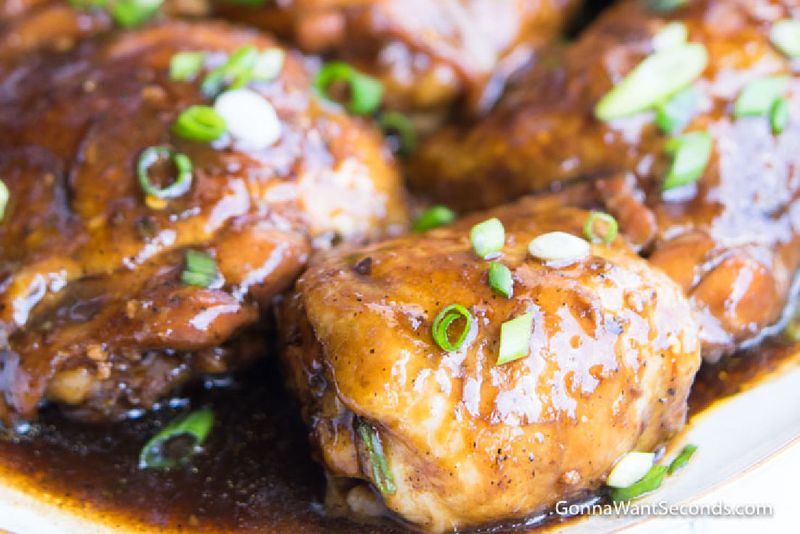
Shoyu Chicken is a classic Hawaiian dish showcasing the islands’ love for soy sauce-based marinades. The chicken is slow-cooked until tender, absorbing the rich flavors of soy sauce, sugar, and ginger.
This dish is often served with rice, allowing the savory sauce to coat each grain, enhancing the overall taste experience. Shoyu Chicken is a staple at many Hawaiian gatherings, praised for its comforting and familiar flavors.
Fun fact: “Shoyu” is the Japanese word for soy sauce, reflecting the significant influence of Japanese cuisine on Hawaiian cooking styles.
Poke
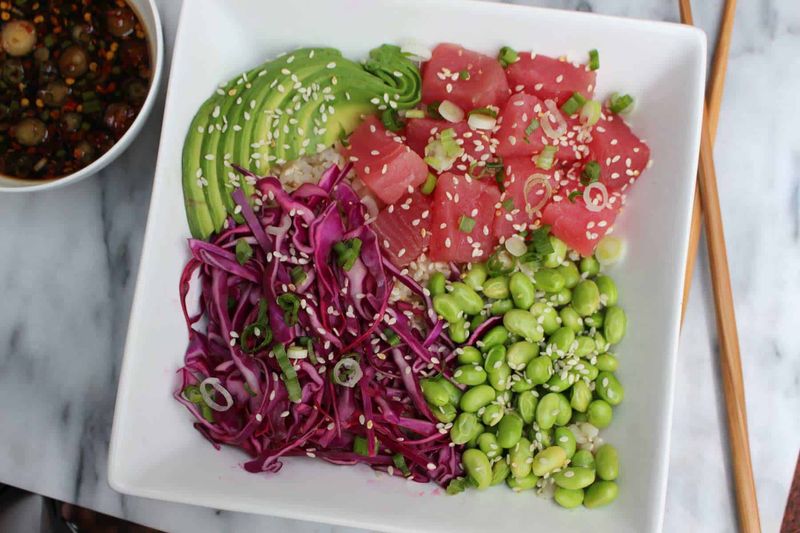
Poke is a vibrant dish that embodies the freshness of Hawaiian cuisine. This raw fish salad, often made with ahi tuna, is seasoned with soy sauce, green onions, and sesame oil, creating a harmony of flavors.
Poke has gained worldwide popularity, but its roots are deeply embedded in Hawaiian culture, where it’s enjoyed as a refreshing appetizer or light meal. The dish is versatile, allowing for various seafood and seasoning combinations.
Did you know? The word “poke” means “to slice” or “cut crosswise” in Hawaiian, reflecting the preparation method of this beloved dish.
Laulau
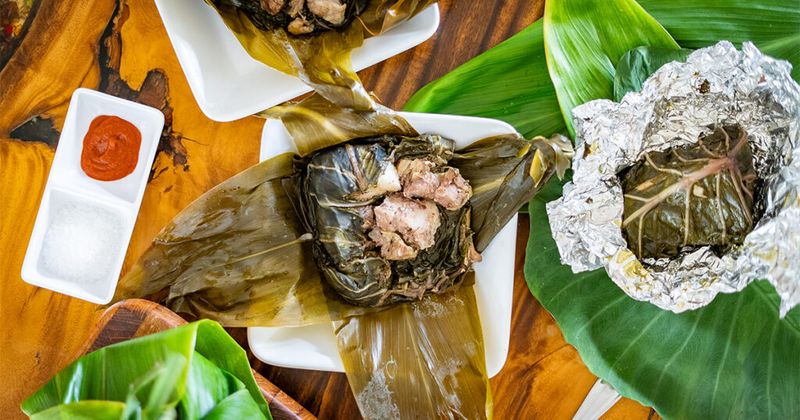
Laulau is a traditional Hawaiian dish that showcases the islands’ agricultural bounty. It consists of pork and fish wrapped in taro leaves, then slow-cooked until the flavors meld into a tender delight.
This dish is a staple at Hawaiian luaus, offering a taste of the islands’ rich culinary heritage. The taro leaves impart a subtle earthiness, enhancing the savory meat and fish.
Laulau’s preparation is a labor of love, often involving family gatherings to assemble the parcels. It’s a dish that brings people together, celebrating the land and its resources.
Lomi Lomi Salmon
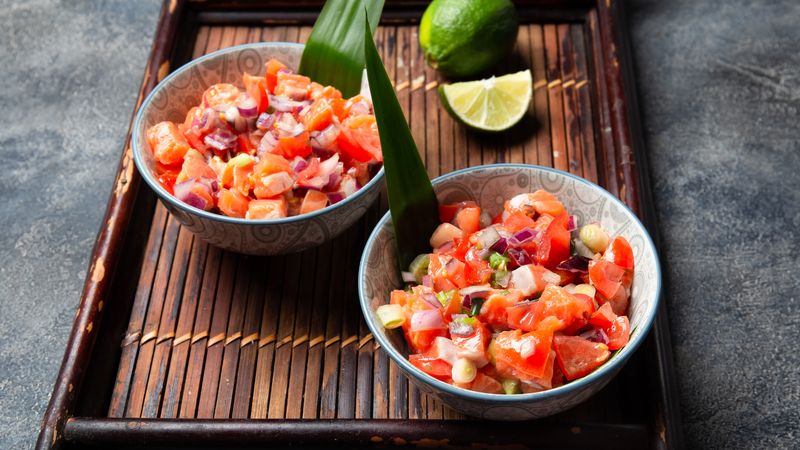
Lomi Lomi Salmon is a refreshing dish that captures the essence of Hawaiian cuisine. This cold salad features salted salmon, diced tomatoes, and onions, creating a vibrant medley of flavors and colors.
It’s traditionally served as a side dish at luaus, complementing the rich and hearty main courses. The name “Lomi Lomi” means “to massage” in Hawaiian, describing the preparation method where ingredients are gently mixed by hand.
Did you know? Lomi Lomi Salmon was introduced to Hawaii by early Western sailors, who brought salted fish as a staple for long voyages.
Haupia
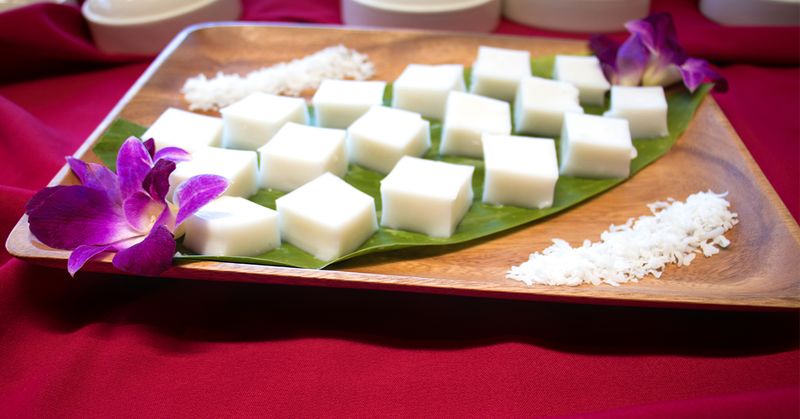
Indulge your sweet tooth with Haupia, a traditional Hawaiian coconut pudding. This dessert is a favorite at celebrations, offering a creamy texture and delicate coconut flavor.
Haupia is often served in small squares, making it a perfect bite-sized treat. Its simplicity allows the natural sweetness of coconut to shine, providing a satisfying end to a meal.
Fun fact: Haupia has been a part of Hawaiian cuisine since the early 1900s, often gracing the dessert table at festive gatherings and luaus.
Chicken Long Rice
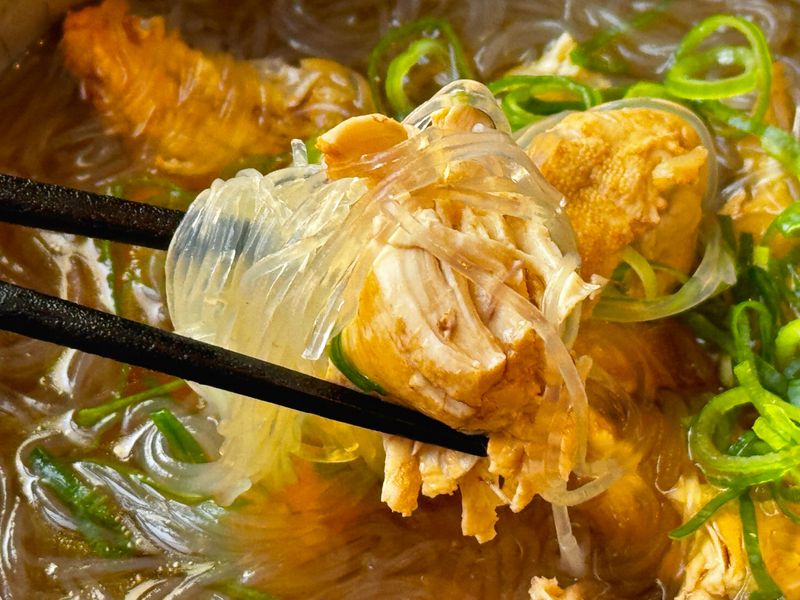
Chicken Long Rice is a comforting dish that highlights the fusion of Asian and Hawaiian flavors. It consists of clear noodles, tender chicken, and ginger broth, resulting in a soothing and hearty dish.
This dish is commonly served at Hawaiian luaus, offering a light and flavorful option amidst the rich main courses. The clear noodles absorb the aromatic broth, delivering a burst of flavor in every bite.
Did you know? Chicken Long Rice is influenced by Chinese cuisine, introduced to Hawaii by Chinese immigrants in the 19th century.
Poi
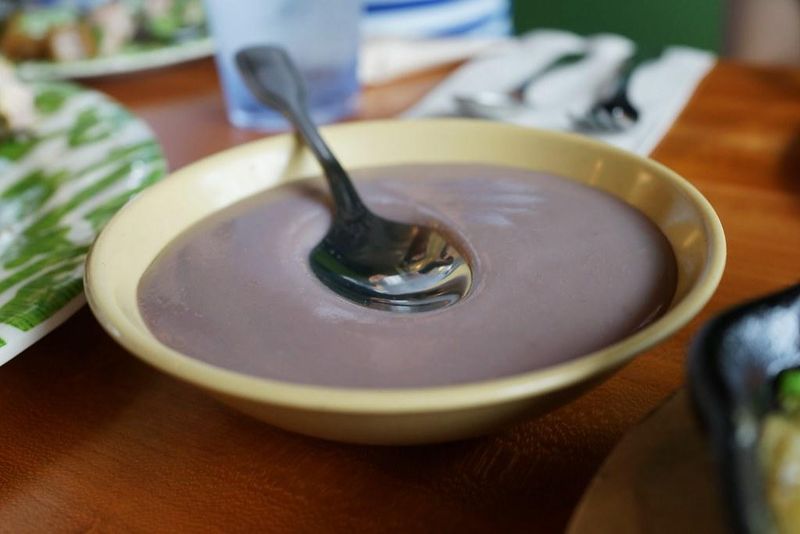
Poi is a traditional Hawaiian staple made from taro root, offering a unique flavor and texture. This starchy paste is created by mashing cooked taro roots until smooth, resulting in a slightly tangy and earthy taste.
It’s often served at luaus, providing a cultural experience that connects diners to Hawaiian history. Poi’s consistency can vary, with some preferring it thick and others more liquid.
Fun fact: Poi is rich in nutrients and has been a vital part of the Hawaiian diet for centuries, sustaining generations with its energy-giving properties.
Manapua
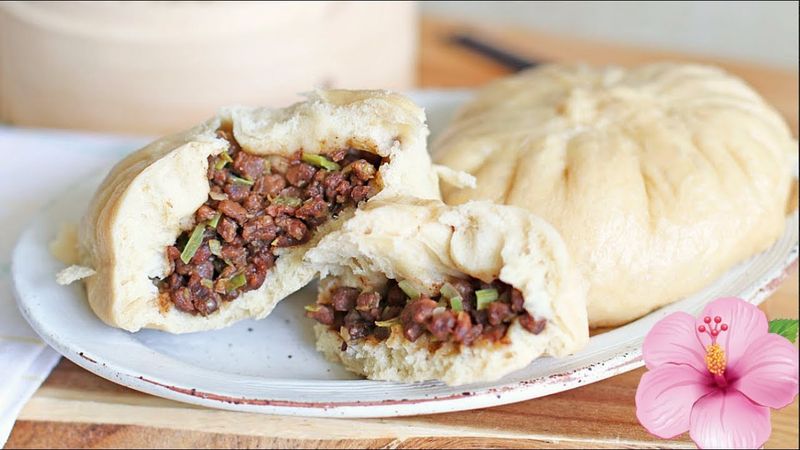
Manapua, or Hawaiian steamed buns, are a tasty treat filled with savory or sweet fillings. The most popular version features a flavorful pork filling, offering a satisfying burst of taste with each bite.
These buns are a favorite snack or lunch option, often found at food trucks or local markets. Manapua showcases the influence of Chinese cuisine on Hawaiian food culture, with its roots in traditional Chinese bao.
Did you know? “Manapua” is derived from the Hawaiian phrase “mea ʻono puaʻa,” meaning “delicious pork thing,” highlighting its delectable nature.
Pipikaula
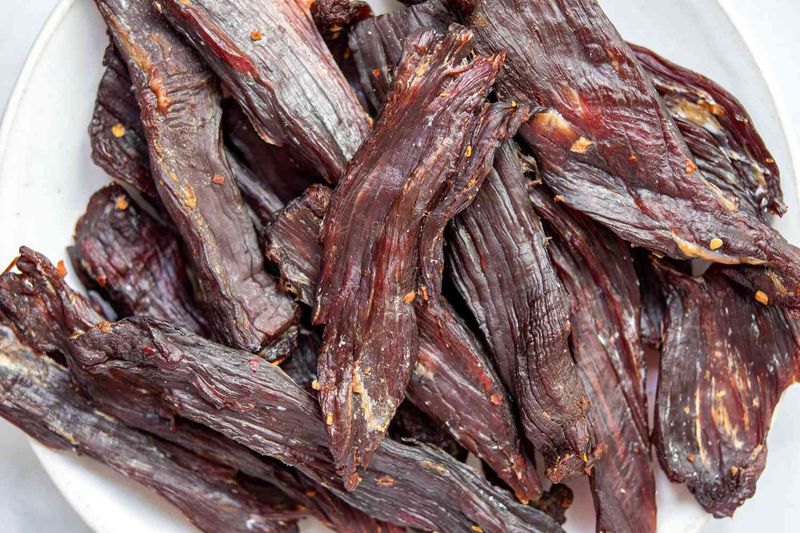
Pipikaula, often referred to as Hawaiian beef jerky, offers a taste of the islands’ paniolo (cowboy) culture. The beef is marinated in soy sauce, garlic, and spices, then dried to create a chewy and flavorful snack.
This dish is perfect for adventurous eaters looking to experience island flavors in a new way. Pipikaula is commonly enjoyed at gatherings or as a snack during hikes and outdoor adventures.
Fun fact: The paniolo tradition in Hawaii dates back to the 1800s, when Mexican vaqueros were brought to teach cattle ranching, influencing local culinary practices.
Ahi Limu

Ahi Limu brings the ocean’s bounty to your plate, combining fresh tuna with limu (seaweed) for a refreshing taste of Hawaii. The dish is seasoned with sesame oil, green onions, and chili pepper, adding layers of flavor.
This seafood delight is popular among locals, offering a healthy and flavorful option that embodies the essence of Hawaiian cuisine. Ahi Limu is a testament to the islands’ connection to the sea and its resources.
Did you know? Limu was once a staple in the Hawaiian diet, revered for its nutritional benefits and versatility in cooking.
Leave a comment